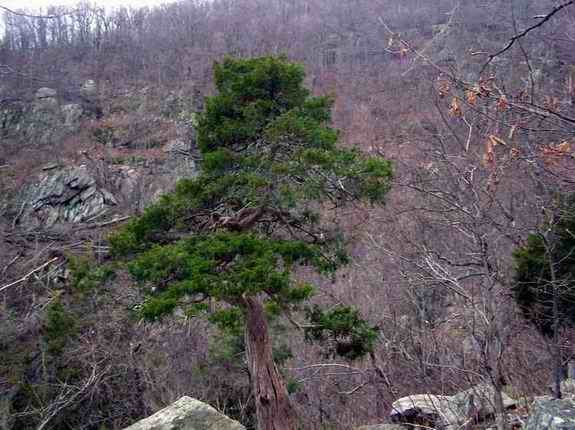|
Common Name: Eastern Red Cedar, Grave Yard Tree, Savin, Cedar Apple Scientific Name: Juniperus viginiana (from Latin iuniperus meaning juniper-tree, as the Red Cedar is not a true cedar, genus Cedrus, but a juniper. First observed at Roanoke Island in Virginia in 1564 whence the species name derives)
Potpourri: Eastern Red Cedar is the most prolific coniferous tree in the Eastern United States, as it is resistant to extremes of drought, heat and cold. Its slow growth earned it the sobriquet Grave Yard Tree from the superstition that when the red cedar you planted was tall enough to shade your grave, it was near to the end of your lifetime.
Many Native American tribes used the red cedar in sweat lodges for purification rituals that cleansed the mind and spirit. A tea made from the berries, twigs and/or roots was used as a general tonic (Blackfoot), to soothe a sore throat (Cheyenne), to treat colds and fevers (Sioux), and to stop diarrhea (Crow). The distilled oil of red cedar, known as cedrol, was listed in the U.S Pharmacopoeia from 1916 and it is still in use in medicines and perfumes. The leaves and twigs contain a substance called podophyllotoxin that has been used in the treatment of cancer for its tumor inhibiting properties.
Cedar wood is very durable and aromatic and was used by the colonists to make furniture that was so cherished that it was often listed in wills. It was also used for fence posts, and, due to its deterrence to moths and woodworm, for cedar clothes chests. Pencils were at one time made almost exclusively from the heartwood of cedar.
|
